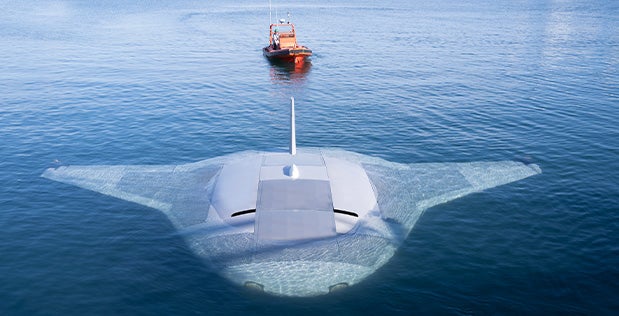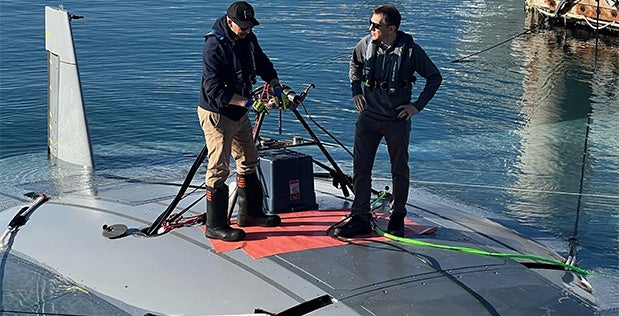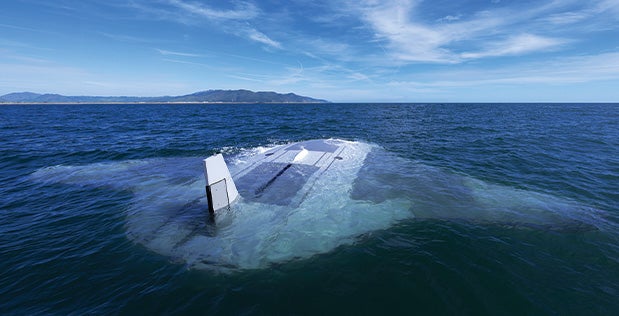DARPA Tests “Manta Ray” Underwater Drone
This month, DARPA announced that it had successfully tested the Manta Ray unmanned underwater vehicle (UUV) off the coast of southern California during trials held in March and February. According to Manta Ray’s DARPA program manager, Dr. Kyle Woerner said:
“Our successful, full-scale Manta Ray testing validates the vehicle’s readiness to advance toward real-world operations after being rapidly assembled in the field from modular subsections. The combination of cross-country modular transportation, in-field assembly, and subsequent deployment demonstrates a first-of-kind capability for an extra-large UUV.”

The prototype vehicle was designed by Northrop Grumman and shipped to the West coast from California. This large craft (see boat in image above for scale) is meant to advance capabilities in a number of areas relevant to UUV development such as efficient undersea propulsion and to demonstrate “a new class of long-duration, long-range, payload-capable UUVs ready for persistent operations in dynamic maritime environments”.
Another major advantage of the craft is its logistics. The Manta Ray will be capable of operating without reliance on ports or manned vessels, therefore avoiding disruptions to other naval operations while simultaneously providing Navy commanders with new capabilities. It can be shipped worldwide in modular pieces and assembled “without crowding valuable pier space at naval facilities” noted Dr. Woerner, adding:
“Shipping the vehicle directly to its intended area of operation conserves energy that the vehicle would otherwise expend during transit. […] Once deployed, the vehicle uses efficient, buoyancy-driven gliding to move through the water. The craft is designed with several payload bays of multiple sizes and types to enable a wide variety of naval mission sets.”

The introduction of large unmanned vehicles into the US Navy could allow the US Navy to greatly expand its capabilities despite the current bottlenecks in areas such as shipbuilding and recruitment. Besides Manta Ray, a number of other projects in this areas are also currently ongoing. In February, Anduril Industries, Kongsberg Discovery, and Oceaneering International received contracts for large UUV prototypes. Meanwhile in December, the US Navy received its first 85-ton Orca XLUUV from Boeing for testing.
Last month, DARPA also released updates on the RACER program which seeks to develop AI algorithms for autonomous ground vehicles operating in rough terrain.

